Презентація на тему «John Constable» (варіант 2)
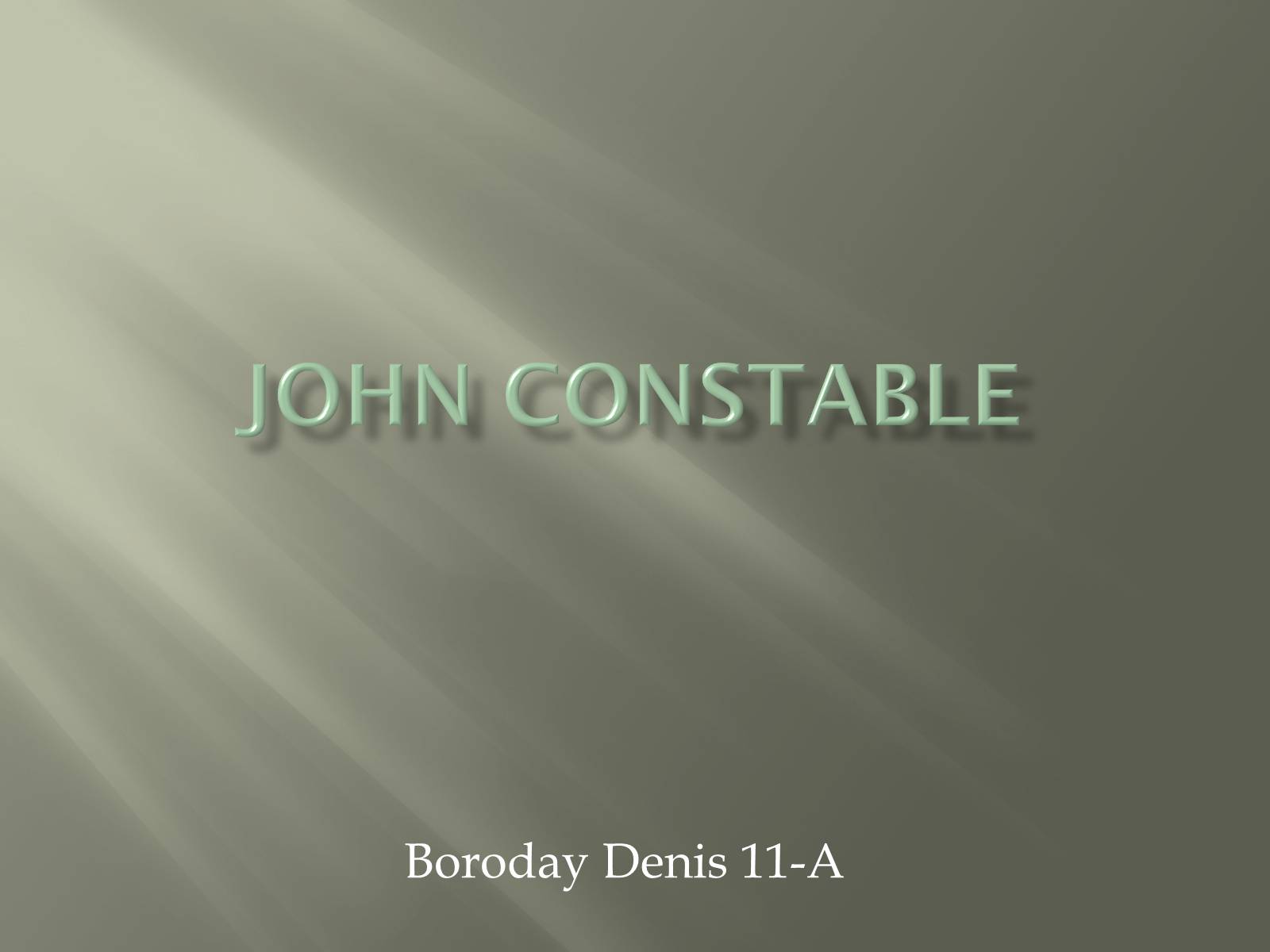
John Constable
Boroday Denis 11-A
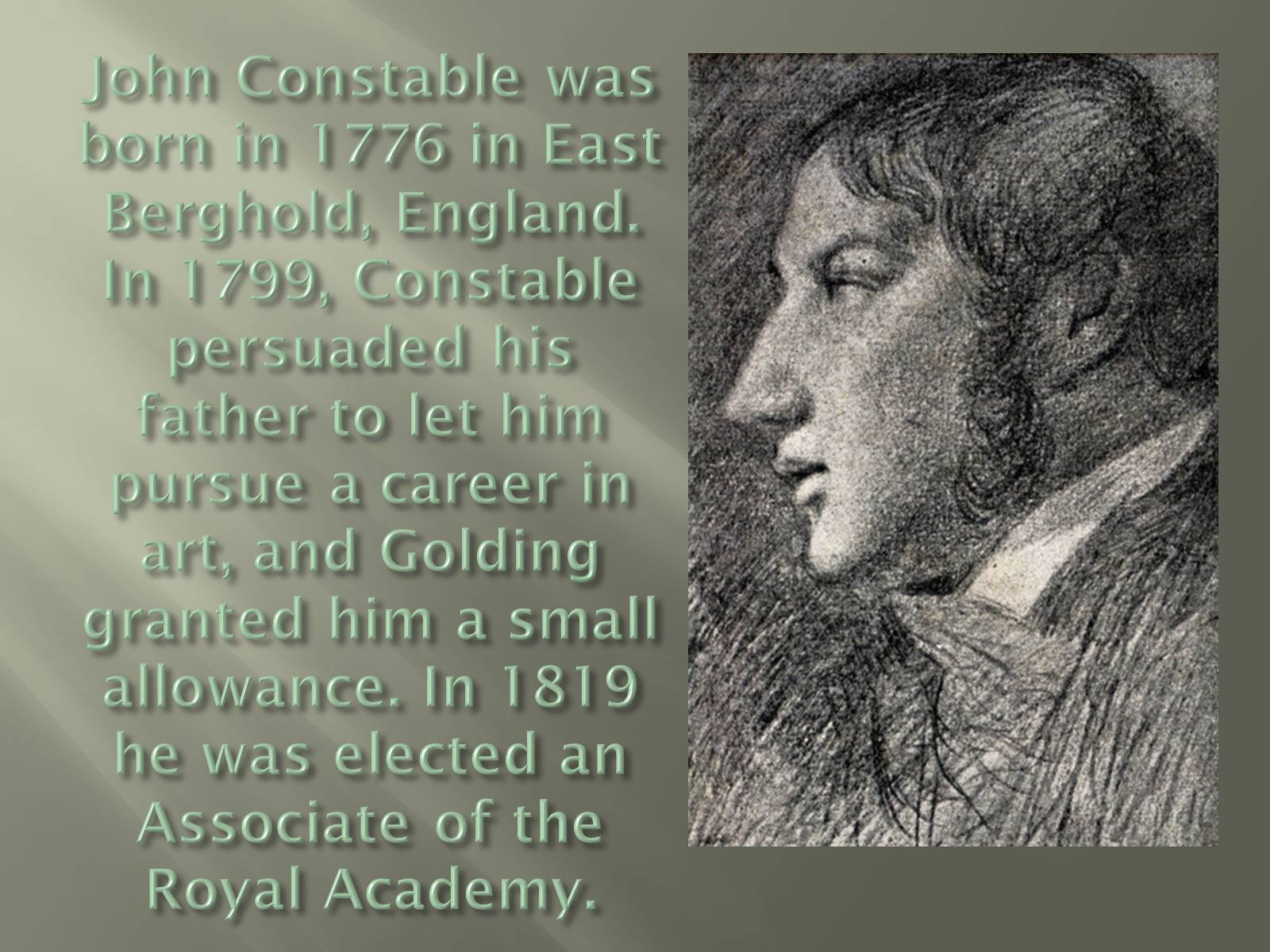
John Constable was born in 1776 in East Berghold, England. In 1799, Constable persuaded his father to let him pursue a career in art, and Golding granted him a small allowance. In 1819 he was elected an Associate of the Royal Academy.
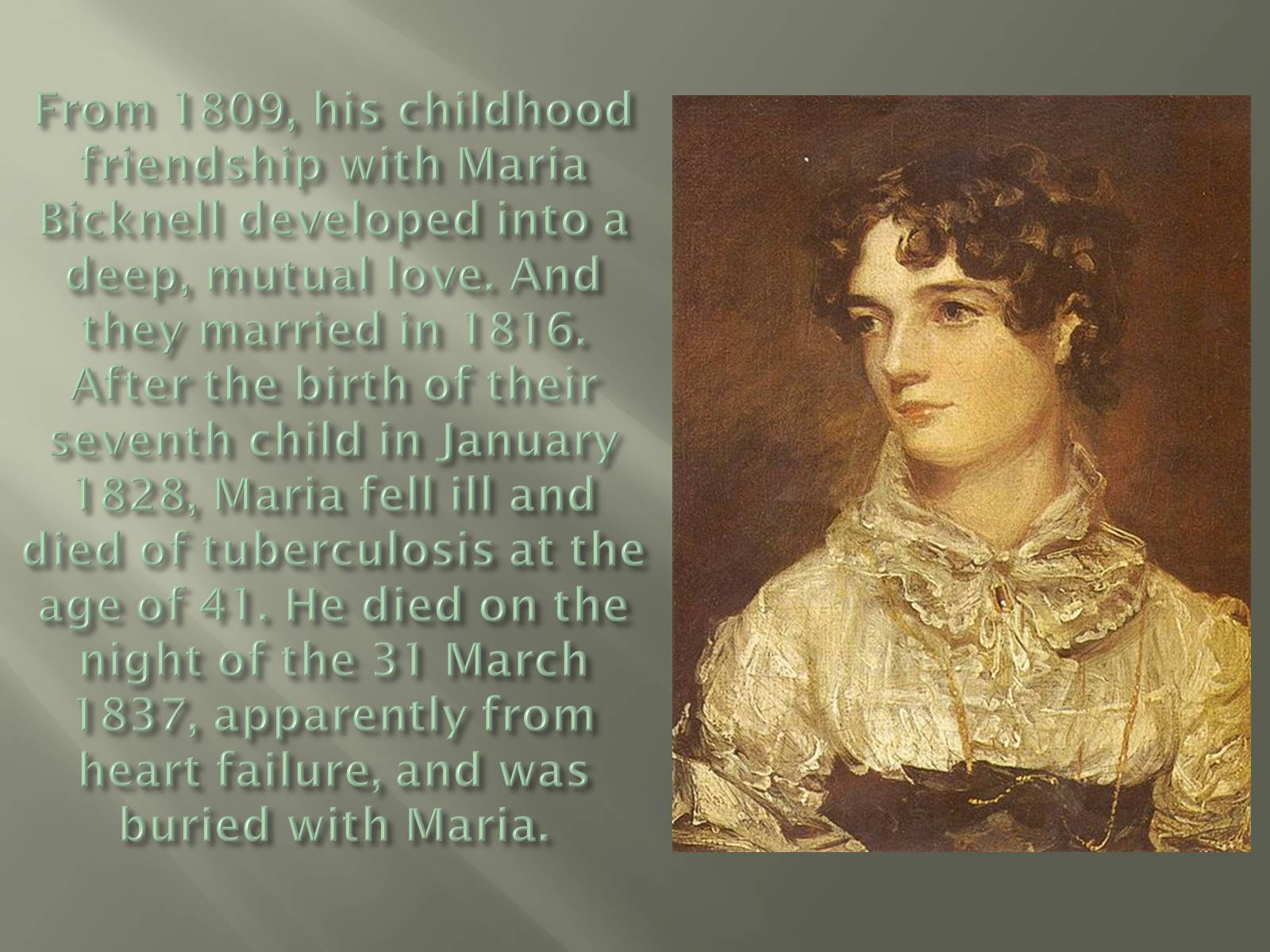
From 1809, his childhood friendship with Maria Bicknell developed into a deep, mutual love. And they married in 1816. After the birth of their seventh child in January 1828, Maria fell ill and died of tuberculosis at the age of 41. He died on the night of the 31 March 1837, apparently from heart failure, and was buried with Maria.
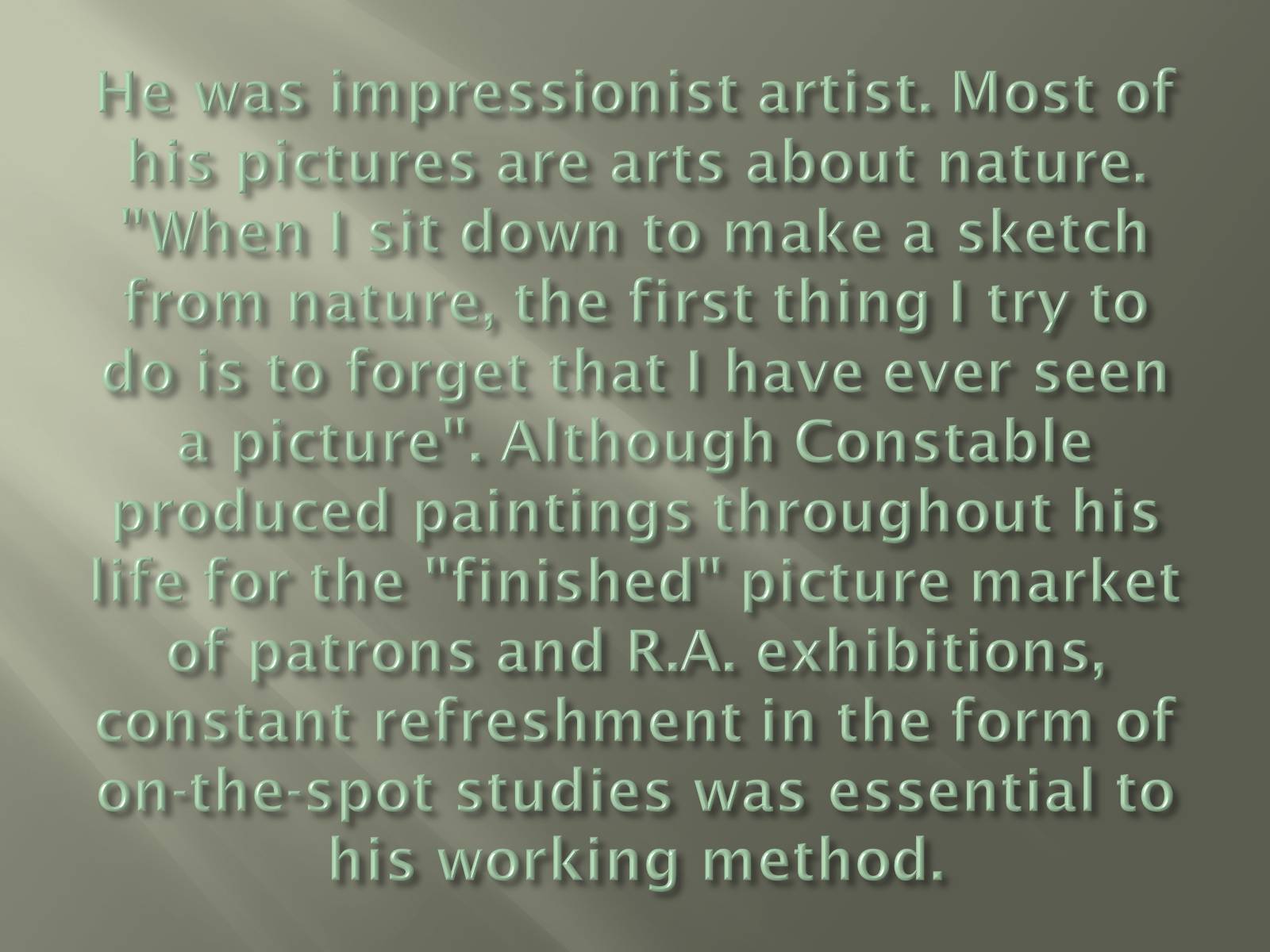
He was impressionist artist. Most of his pictures are arts about nature. "When I sit down to make a sketch from nature, the first thing I try to do is to forget that I have ever seen a picture". Although Constable produced paintings throughout his life for the "finished" picture market of patrons and R.A. exhibitions, constant refreshment in the form of on-the-spot studies was essential to his working method.
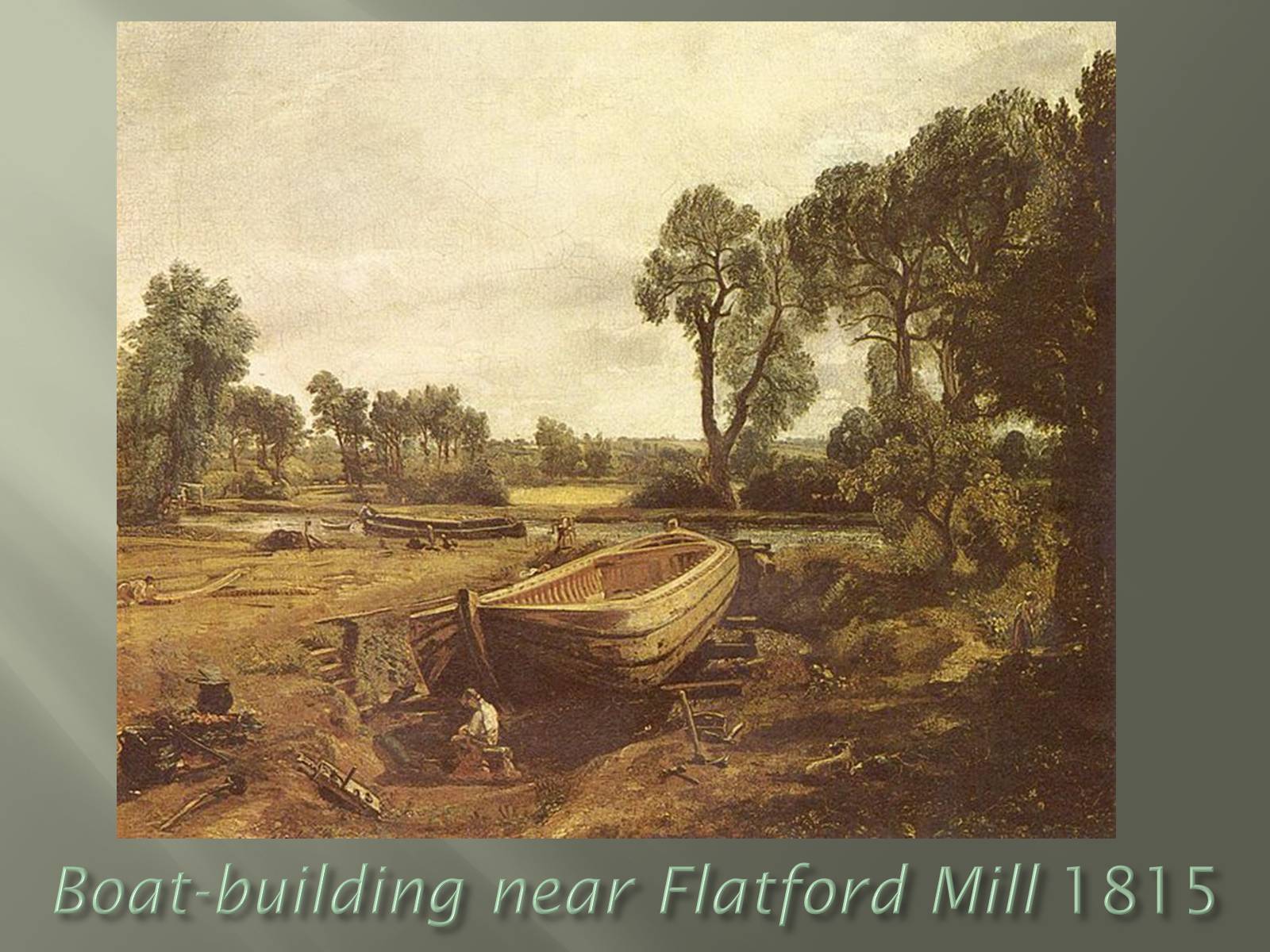
Boat-building near Flatford Mill 1815
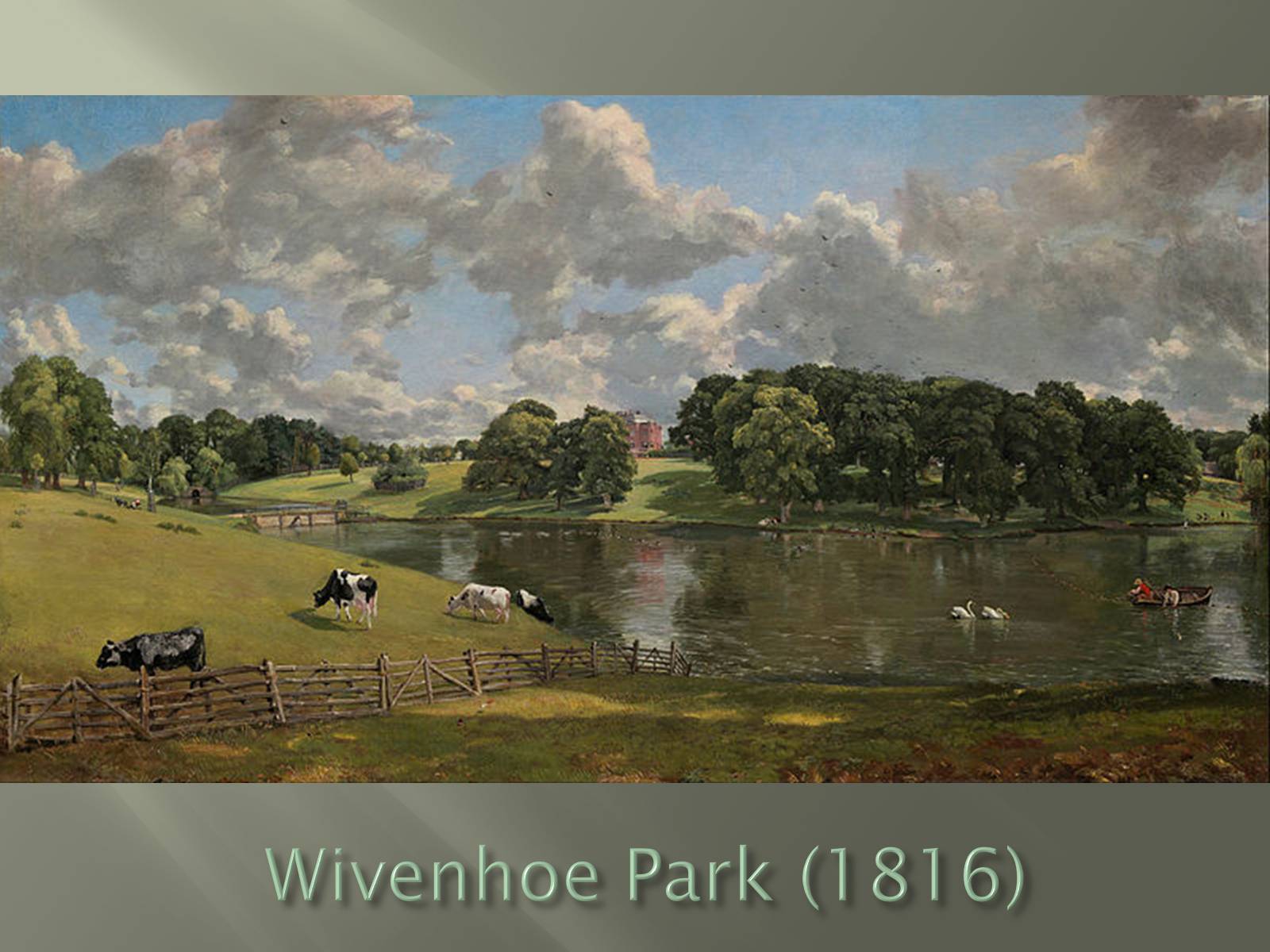
Wivenhoe Park (1816)
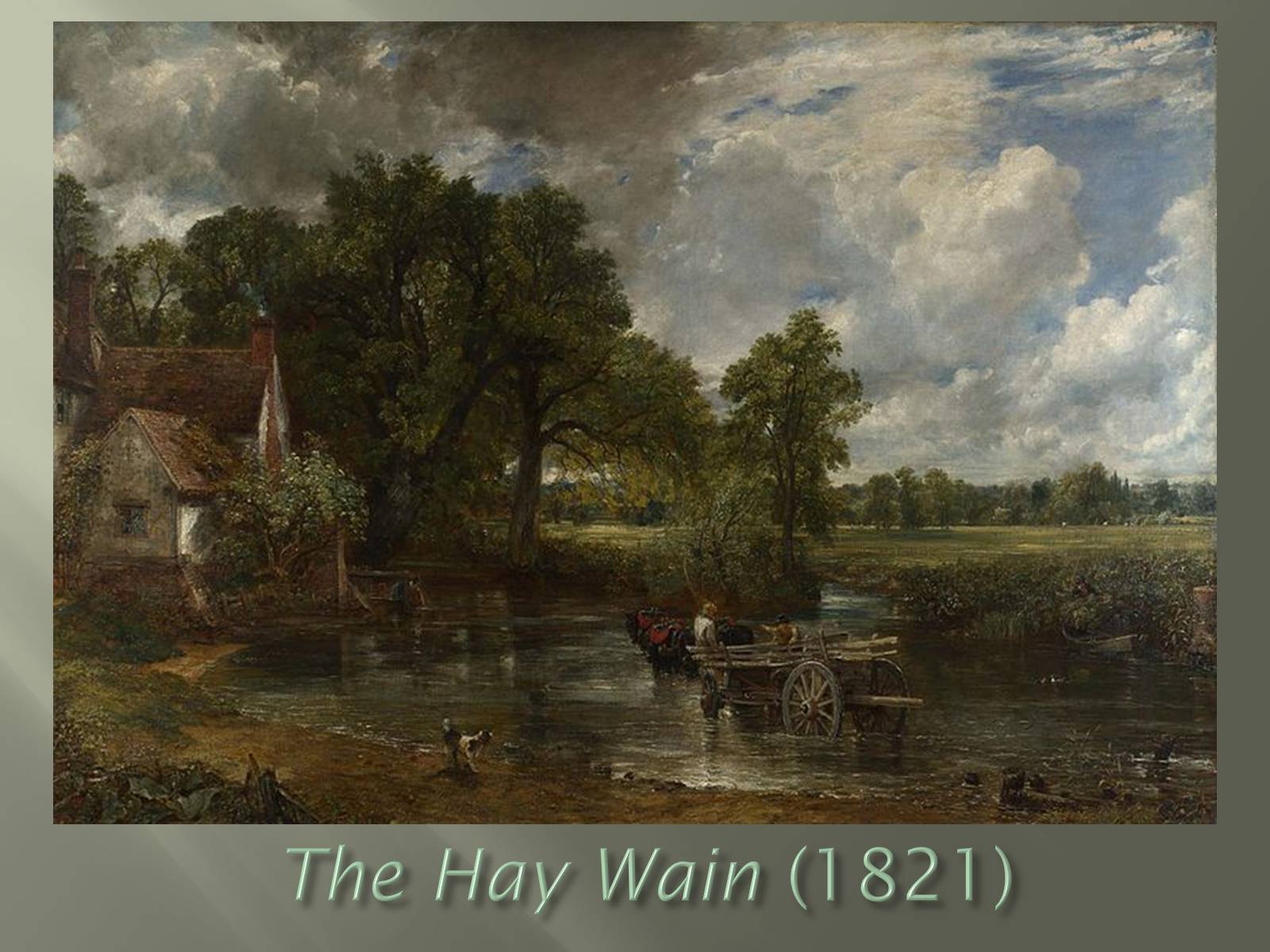
The Hay Wain (1821)
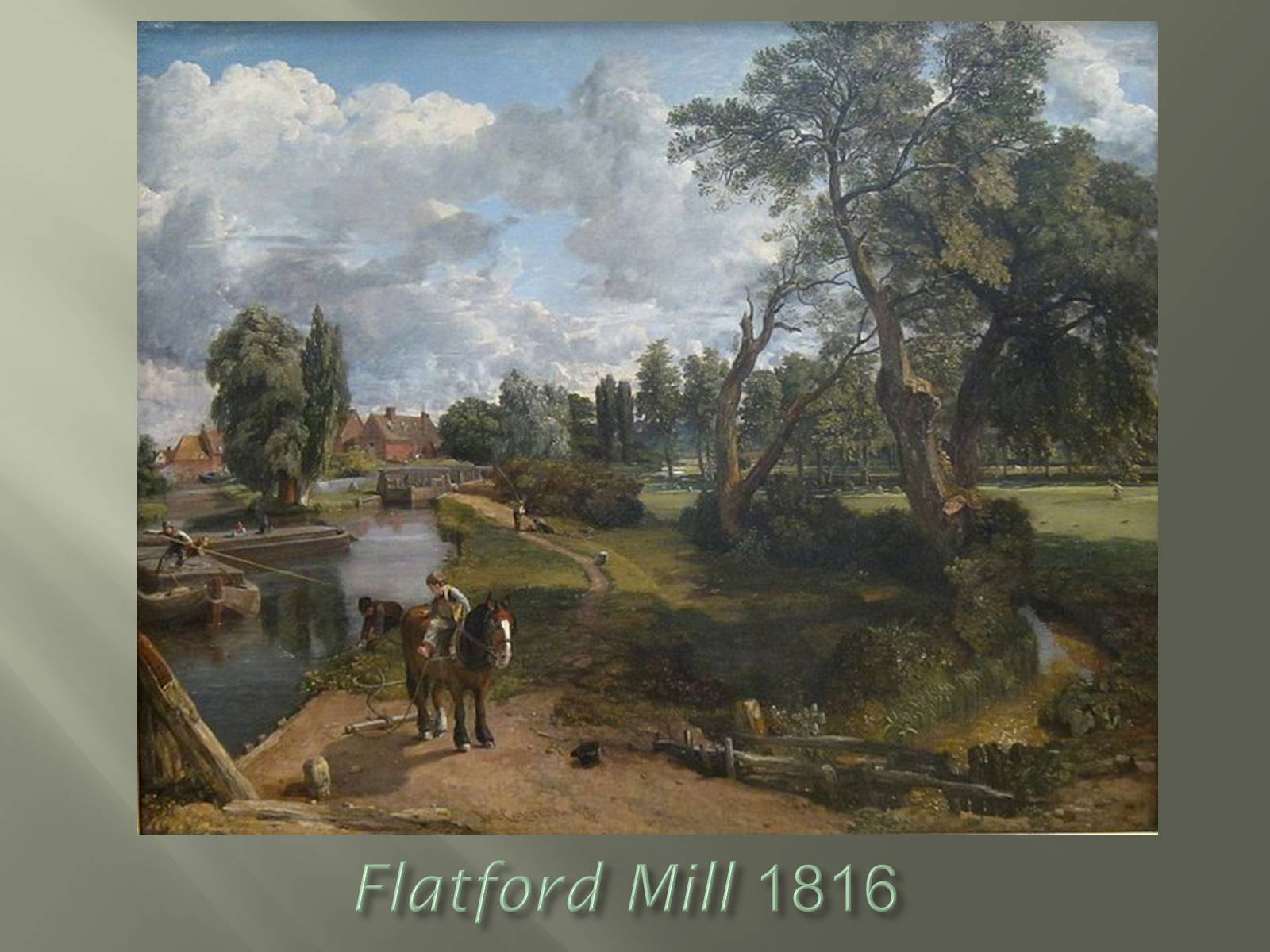
Flatford Mill 1816
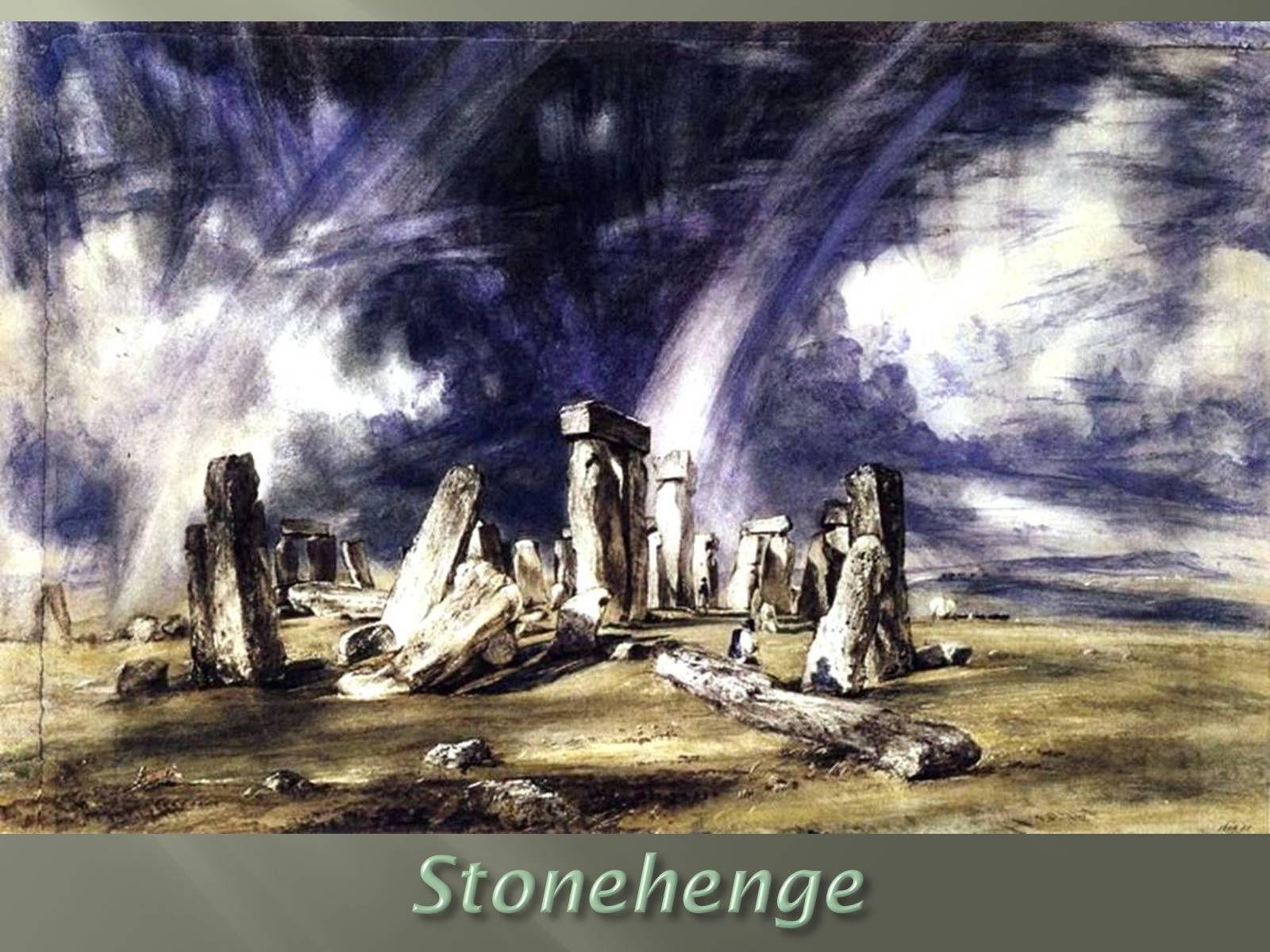
Stonehenge
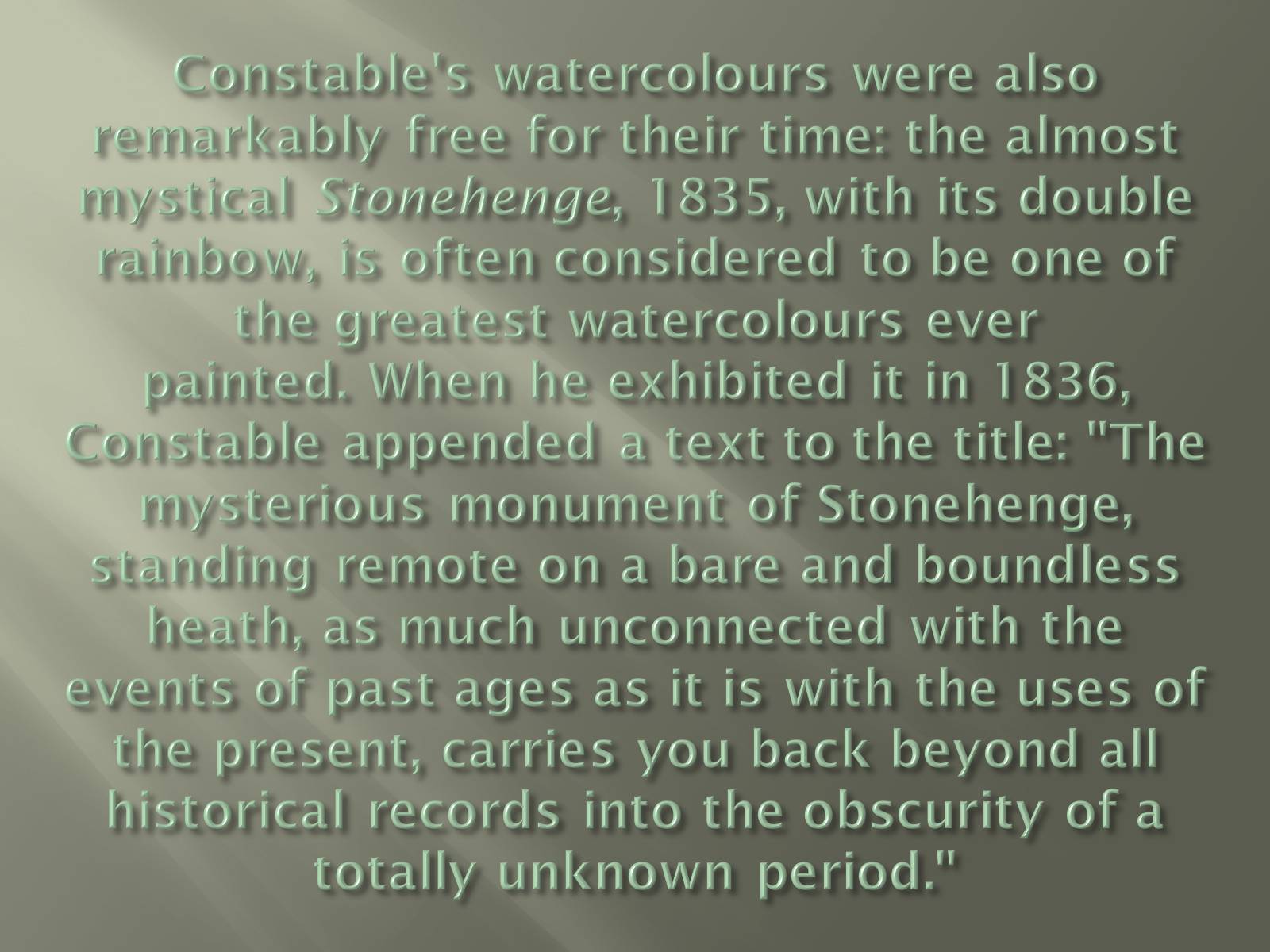
Constable's watercolours were also remarkably free for their time: the almost mystical Stonehenge, 1835, with its double rainbow, is often considered to be one of the greatest watercolours ever painted. When he exhibited it in 1836, Constable appended a text to the title: "The mysterious monument of Stonehenge, standing remote on a bare and boundless heath, as much unconnected with the events of past ages as it is with the uses of the present, carries you back beyond all historical records into the obscurity of a totally unknown period."